The OWL, Logical Fallacies, and Social Media Arguments
by Michael Winters
Arguing with someone online, particularly strangers, is often a fruitless endeavor that usually leads to annoyance and deeper hatred for the opinion of the people on the other side. This occurs because it is very difficult for people to change their mind after they have decided upon something, and it is likely that the antagonist is not really reading what you have written to understand it. Instead, he or she is reading to attack your views. Reviewing the Excelsior University Online Writing Lab’s (OWL) section on Logical Fallacies is a great way for you to be sure that your arguments do not contain faulty logic that can be easily attacked to weaken your point.
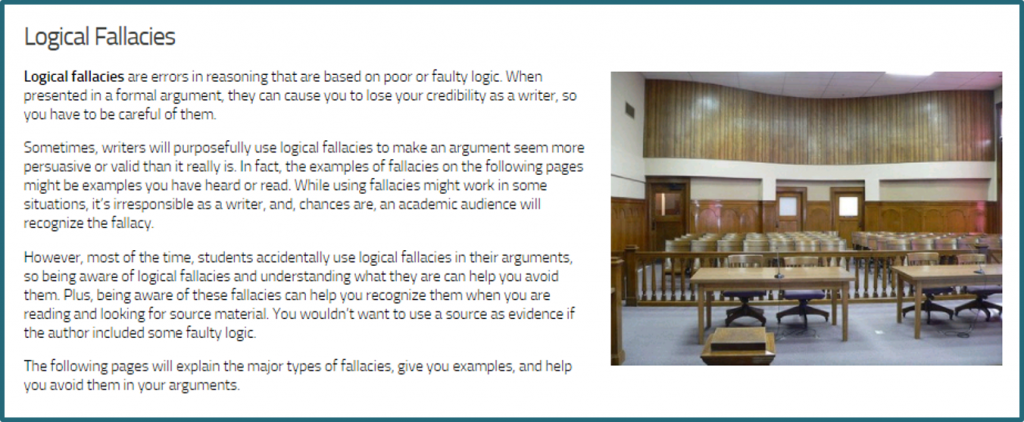
Located within the Argument and Critical Thinking section of the OWL is an explanation of eight common logical fallacies: Straw Man Fallacy, False Dilemma Fallacy, Hasty Generalization Fallacy, Appeal to Fear Fallacy, Ad Hominem Fallacy, Slippery Slope Fallacy, and Bandwagon Fallacy. The Logical Fallacies section uses text, cartoons, and videos to help you recognize when fallacies are being used. Each fallacy is defined and an example is given.
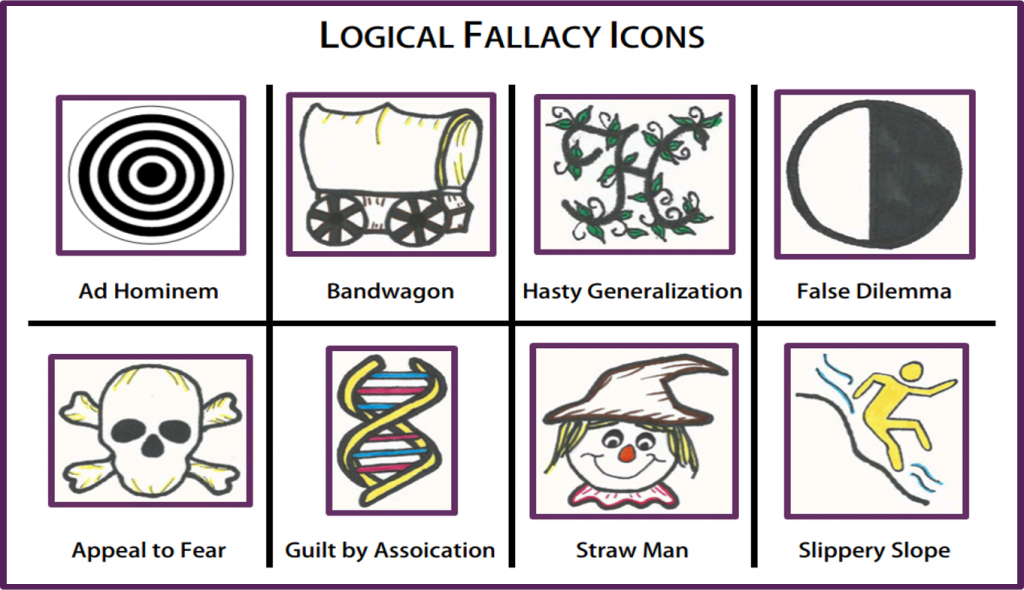
What really sets this section of the OWL apart is the cartoon drawn to demonstrate the use and rebuke of the logical fallacies. On each page, the evil “Dr. Fallacy” irresponsibly misinterprets what is being said so he can influence others to think like him. Luckily, our hero, Captain Logic Owl, swoops in and points out the doctor’s tricky logic play. Finally, the cartoon is explained so the reader will understand how the fallacy is being used.
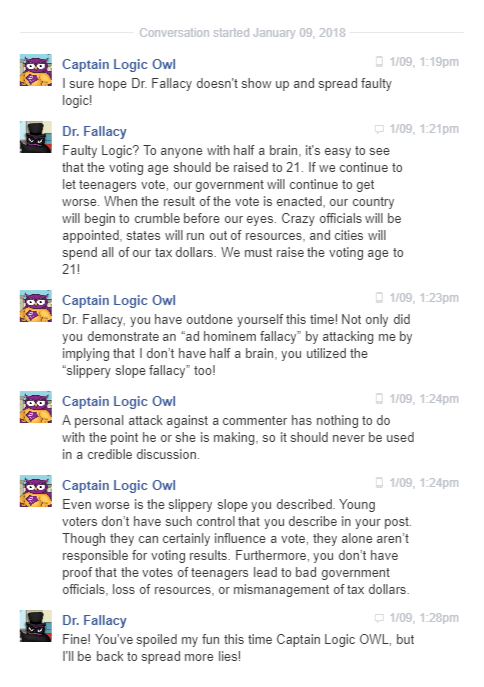
To get the most out of this section, first read and then reread the definition of the fallacy.

Continue by reading the example conversation that demonstrates the fallacy.

After that, review the comic and explanation.
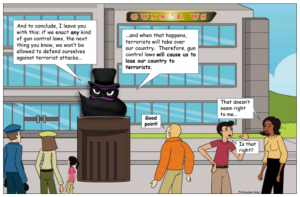
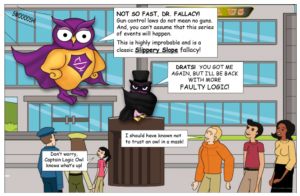
Now, create two conversations on your own that demonstrate the fallacy in action. Model your conversations after the example given on the site. Once you complete a couple of examples, you will be able to recognize when you accidentally use a fallacy in your own writing.
Although the original intention of the Logical Fallacies section was for students to learn not to use fallacies in their writing and to recognize fallacies in a source they may consider for a paper, this information is also very useful for engaging in debates on social media. Arguing online may be a futile experience in terms of changing someone’s mind, but it can be a great way to practice what you learn from the OWL’s Logical Fallacies section.
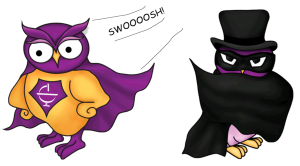 As you can see, Captain Logic Owl once again debunks Dr. Fallacy’s faulty logic by exposing the slippery slope and ad hominem fallacies in his argument. Without the Owl’s intervention, other readers may start to believe the lies shared by Dr. Fallacy. Recognizing a weak argument from an antagonist is valuable from a debate standpoint, but it may be even more important to review your own posts so that you do not fall into the trap of using a fallacy.
As you can see, Captain Logic Owl once again debunks Dr. Fallacy’s faulty logic by exposing the slippery slope and ad hominem fallacies in his argument. Without the Owl’s intervention, other readers may start to believe the lies shared by Dr. Fallacy. Recognizing a weak argument from an antagonist is valuable from a debate standpoint, but it may be even more important to review your own posts so that you do not fall into the trap of using a fallacy.
Before you hit the comments section on the next polarizing article that you read, head over to the Logical Fallacies section of the OWL to get started on building your argument and critical thinking skills.
About the Contributor
Michael Winters is a former writing center manager and is currently the manager of learning support technology at Valencia College’s West Campus in Orlando, Florida.
